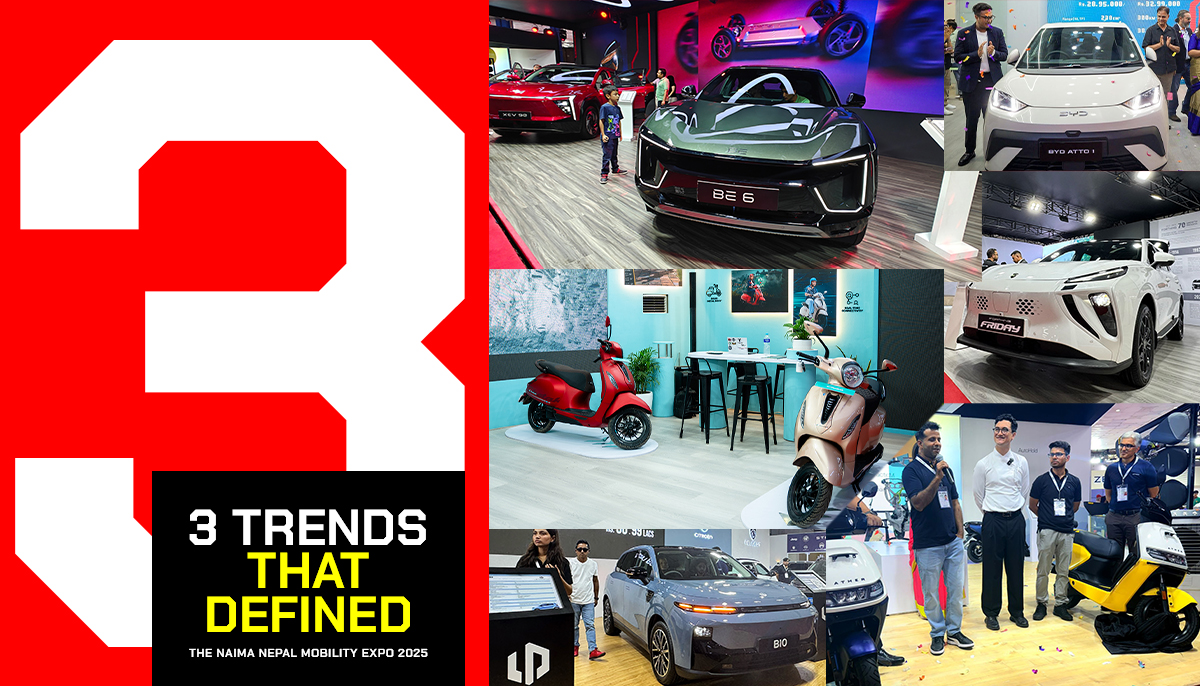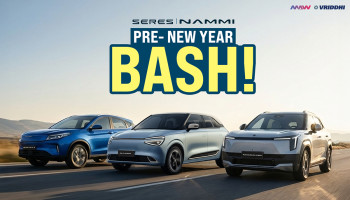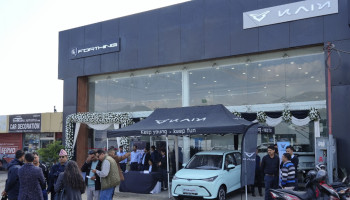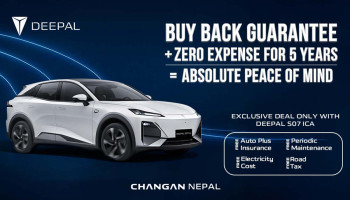The inaugural NAIMA Nepal Mobility Expo 2025 was not just a showcase of vehicles—it was a clear snapshot of where Nepal’s automotive industry is heading. Among the many highlights, 3 standout trends emerged, signaling significant shifts for manufacturers, buyers, and the future of mobility in Nepal.
1. The Electric and Hybrid Push Continues: Setting a New Industry Standard
One of the most striking trends at the NAIMA Nepal Mobility Expo 2025 was the sustained and robust push toward electric and hybrid vehicles. Nearly every major brand showcased at least one EV or hybrid model, highlighting Nepal’s shift toward greener transportation. Electrification is no longer a niche option — it has become a central pillar of automotive strategies in the country.
This commitment was clearly evident in the wide range of launches and showcases at the expo. BYD introduced the Atto 1 (also known as the Seagull), while Mahindra made a strong impression with its BE 6 and XUV 9e models. Leapmotor unveiled the B10, Omoda & Jaecoo brought in the J5, and the Forthing brand made its debut with the Friday EV. Maxus showcased the MIFA 7, Mazda launched the CX60, Toyota displayed the Yaris Cross Hybrid, MG showcased the IM6, and Great Wall Motors (GWM) presented the Tank 500 PHEV, among many others.
Among these, BYD and Mahindra attracted the highest footfalls, largely driven by the popularity of the Atto 1 and BE 6 respectively. This shows that Nepal’s automotive market is gradually catching up with global moves toward sustainability, with more eco-friendly vehicle options becoming available as infrastructure slowly improves.
2. Electric Compact SUVs and Crossovers Are Winning Hearts
When it came to bookings, compact electric SUVs and crossovers were the real crowd-pleasers. While the BYD Atto 1—a sleek electric hatchback—grabbed the most attention, fierce competition unfolded among several brands in the Rs 50–65 lakh price range, fueled by a noticeable price war to win over buyers.
One of the biggest stories at the expo was the intense battle in the Rs 50–70 lakh segment, densely packed with electric SUVs and crossovers competing aggressively. Most prices were exclusive NAIMA offers, making this the hottest battleground for EV buyers in Nepal.
Leapmotor’s B10 compact SUV launched at Rs 49.99 lakh (base) and Rs 56.99 lakh (top variant), while its C10 received a significant expo-only markdown from Rs 72 lakh to Rs 64.99 lakh. Forthing made a strong entrance with the Friday EV priced between Rs 48.96 lakh and Rs 54.96 lakh, undercutting rivals to grab early attention.
Jaecoo stirred the competition with the J6 at Rs 65.99 lakh and a surprise price cut on the J5 EV to Rs 56.99 lakh, directly challenging Leapmotor and Forthing in the popular Rs 50–60 lakh range.
Mahindra added further depth with the BE 6 starting at Rs 57 lakh and the premium XUV.e9 at Rs 69 lakh, intensifying the already crowded Rs 57–70 lakh bracket. Meanwhile, other brands like Kaiyi, Zeekr, Nissan, and MG offered hefty discounts, heating up the competition even more.
Clearly, the Rs 50–70 lakh segment has become the hotspot for buyers seeking premium yet competitively priced electric SUVs, with plenty of attractive deals showcased at the NAIMA Nepal Mobility Expo 2025.
This fierce price competition is great news for consumers, offering more affordable and appealing options than ever before. If you’re in the market for a practical yet modern ride, these models are definitely worth watching. Looking ahead, the market is set to get even more exciting with upcoming launches like the BYD Atto 2, Chery iCar V23, Deepal S05, and Suzuki eVitara expected soon, signaling continued growth in Nepal’s EV landscape.
3. Electric Two-Wheelers Are Back — And Better Than Ever
Two-wheelers have long been a cornerstone of Nepalese mobility, and the expo clearly showed that electric scooters are making a powerful comeback. Stalls featuring popular models like the Bajaj Chetak and Ather Rizta were buzzing with visitors eager to experience these sleek, eco-friendly rides firsthand.
On the performance front, Ultraviolette Automotive drew significant attention with its high-performance F77 motorcycle, captivating crowds with its blend of power and technology. Other brands such as NIU, Segway Ninebot, Revolt, and Yadea also held their own, showcasing diverse options that impressed attendees.
Gogoro stood out with its industry-first buy-back scheme, attracting curious buyers and creating buzz around its innovative approach. Meanwhile, BGauss made a splash by launching its electric scooter, adding to the growing range of choices for consumers.
This recent resurgence is truly exciting. There was a time when the market was flooded with low-quality Chinese electric scooters, which unfortunately gave electric two-wheelers a poor reputation overall. Because of those early quality issues, electric scooters struggled to gain lasting trust among buyers.
However, fast forward to today, and the landscape has changed dramatically. Brands like Ather, Ultraviolette, Bajaj and Gogoro are raising the bar with their world-class, innovative products — offering reliable options that are reigniting interest and confidence in electric two-wheelers. Thanks to this shift, electric scooters are now well-positioned to become a vital part of urban commuting.
What It All Means
Putting these trends together, it’s clear Nepal’s automotive landscape is evolving rapidly. Manufacturers are doubling down on electric technology, and customers are increasingly ready to embrace cleaner, smarter options. To keep pace, Nepal will need better charging infrastructure, smarter policies, and ongoing public education.
The NAIMA Nepal Mobility Expo 2025 was a clear signal that Nepal’s automotive future is electric, compact, and dynamic. For companies and consumers alike, it’s time to buckle up and get ready for the ride ahead.



















